Hello!
My name is Takuto Fujioka, guitarist in an acoustic unit called BABY BABY and an occupational therapist.
Thank you for always reading my column!
This time, entitled Fingering, I will delve into how to use the left hand mainly from the perspective of an occupational therapist.
I have a lot to write, so I would like to split the fingering edition in several parts. Thank you for staying with me!
The first topic is about"how to hold down the F chord", which is the gateway to the guitar world.
I think there are many people who have started a “new life” in April and some of you have probably started playing the guitar.
The first difficulty, and (probably) the number one trigger to frustrate the guitar, is the F chord!!!
In fact, when I started playing the guitar, I was frustrated by the F chord.
As you know, unlike other chords, the F chord is also known as a "ceja" and you have to press all the strings with your index finger. This is called a barre chord.
Again, this is difficult for beginners!!!
I remember in the beginning putting all of my strength into the index finger, the strings digging into it and it looked like a boneless ham.
If you play chords like the F chord taking hand structure into consideration, you can easily hold them down!
I would like to explain it as concisely as possible in connection with the structure of the hand.
First of all, there are 4 points, so let's take a look!
[Points to master the F chord]
If you can do it properly in order from 1 to 4, you should be able to hold down the F chord!
1. Check the form
2. Move the entire arm, angle it to the thumb side, and touch the string at the 1st fret with the outside of the index finger.
3. Push the strings imagining you’re pushing them up.
4. Hold the strings imagining you’re pushing up the other fingers lightly.
Now I would like to explain in order.
1. Check the form
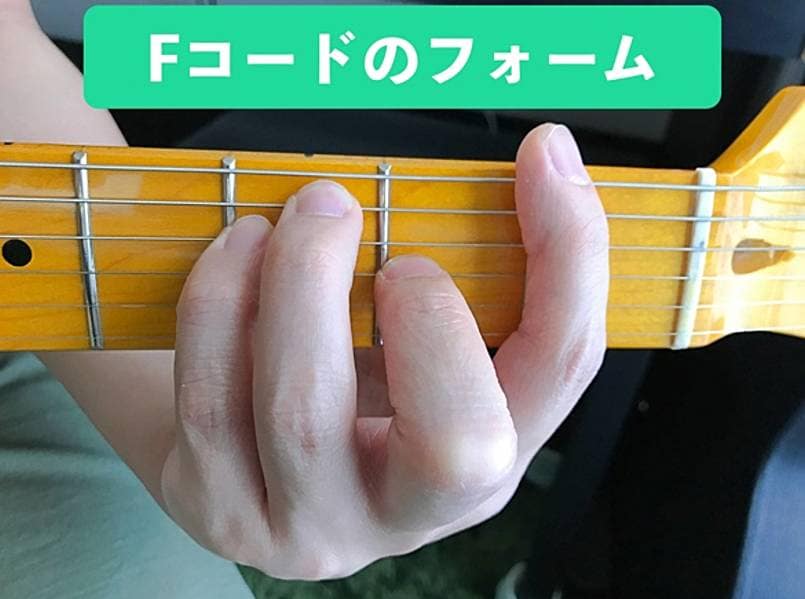
If you hold the neck, you will get nervous and the grip will be unnatural. But first, let's release the unnecessary force before pressing the strings to make it comfortable and easy to hold.
The relaxed palm has a slight depression, giving it a natural arch (concave shape).
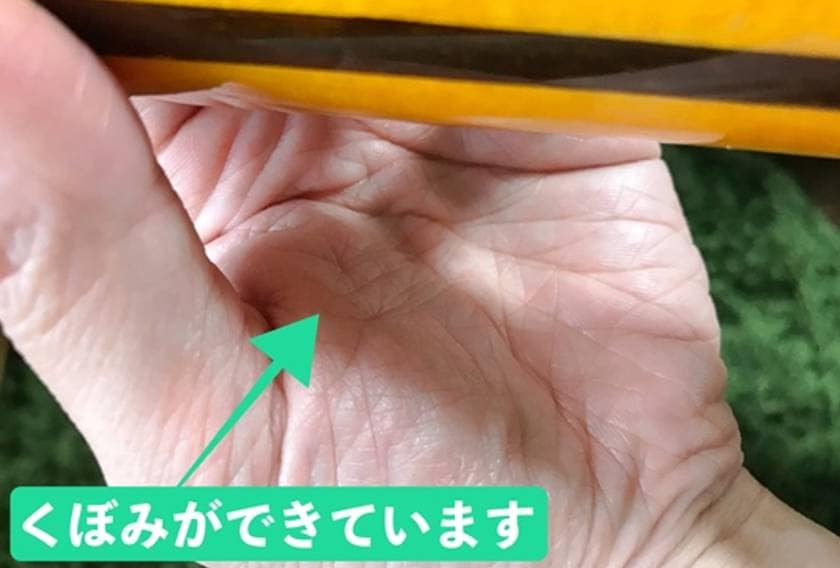
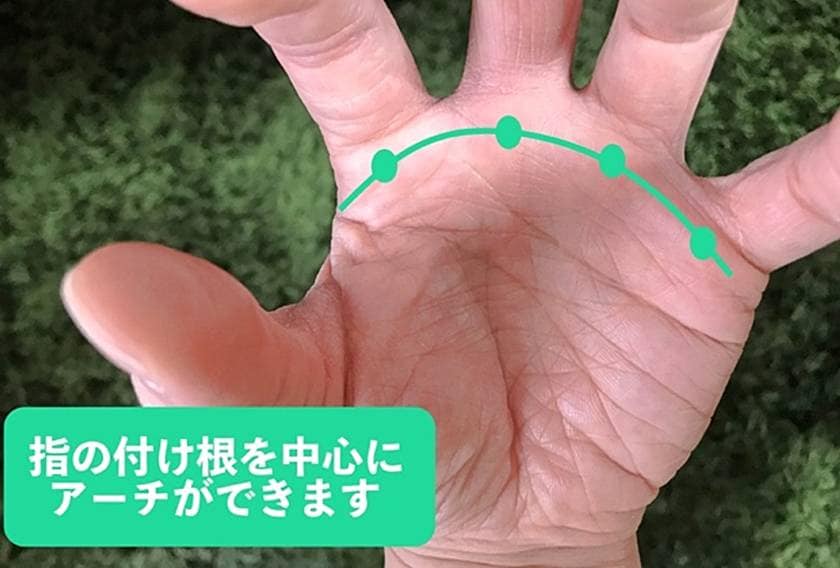
It resembles the shape of a hand when grabbing a ball.
First, compare it with your own form. You don't have to actually make a sound yet.
2. Move the entire arm, angle it to the thumb side, and touch the string at the 1st fret with the outside of the index finger.
Next is regarding "ceja", which is holding the six strings down with the index finger.
I often hear that "holding on the outside instead of the pad of the finger" is a key point when performing barre chords But if you are only conscious of your fingers, your fingers and wrist will be overloaded and burdened.
To hold it on the outside of your index finger, (1) loosen your armpit and (2) angle your index finger by turning your arm slightly outward.
Let's call it the feeling of squeezing your arms.
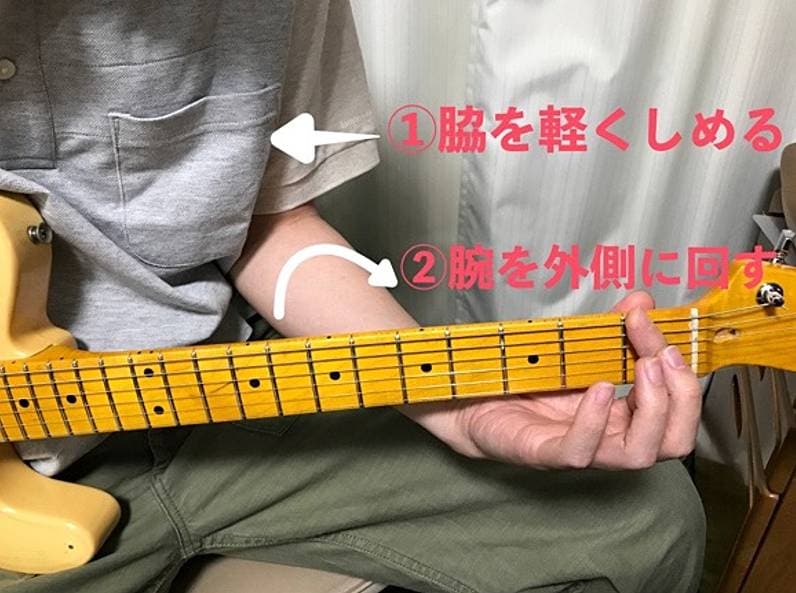
Seen from above, it looks like this.
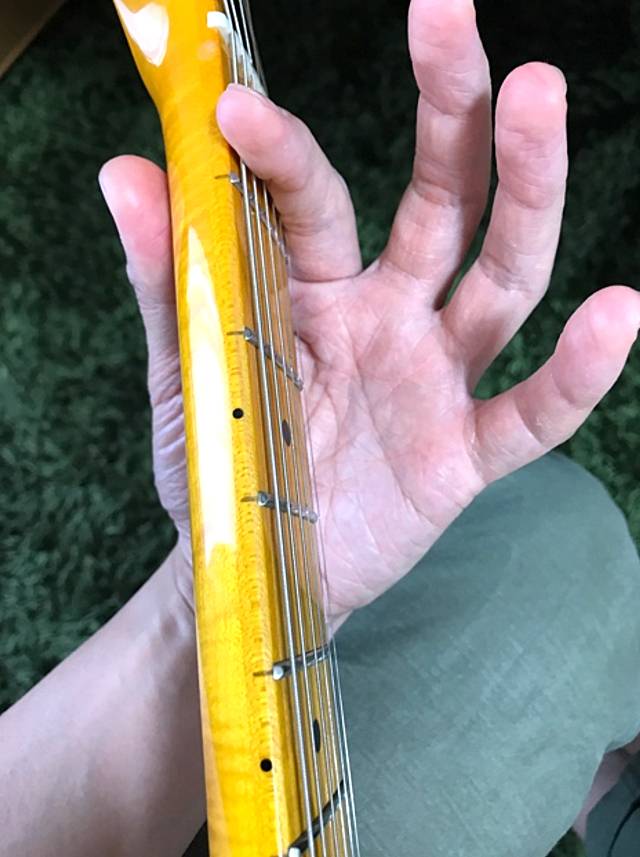
Make sure that your shoulder and forearm move at the same time, not just your hands.
If you put too much effort into it, it will affect the next step, so let's aim to be comfortable and natural!
3. Push the strings imagining that you’re pushing them up.
Now, let's actually hold the strings down (finally!).
Instead of applying force perpendicular to the fingerboard, extend your finger from the base of your index finger (the base of your index finger is bent, but the finger itself is extended upward) toward the 6th string. Press the strings imagining that you’re pushing them up lightly.
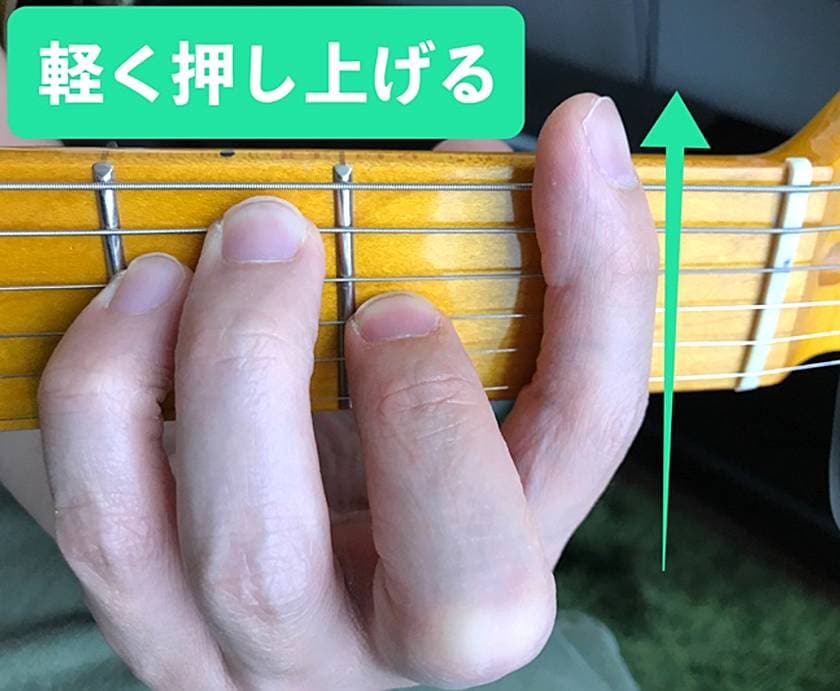
Instead of pinching with your thumb, focus on thinking of it as pulling it down slightly.
It's like twisting the neck with your thumb and index finger.
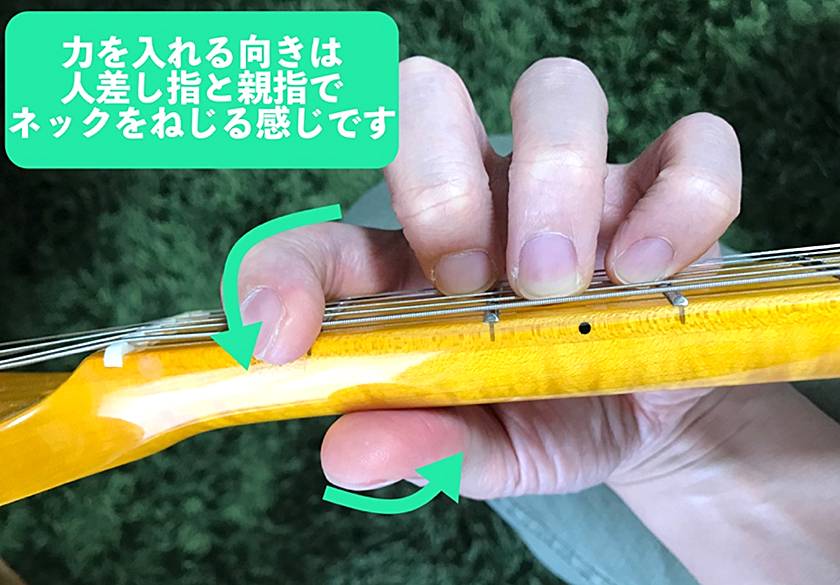
If you apply too much force here, your wrist will twist more than necessary and the other three fingers will move away from the strings, so hold it down with the minimum necessary force!
Here, I will explain why it is easier to hold down by putting more force on the extended side without using force to bend the finger.
(It's a little confusing, but it's important. If you're interested, keep reading!)
This is due to the relationship between the length of the muscles attached to the hand.
If you bend your wrist backwards, your fingers will bend.
On the contrary, if you bend your wrist forwards (bend your palm), your fingers will stretch.
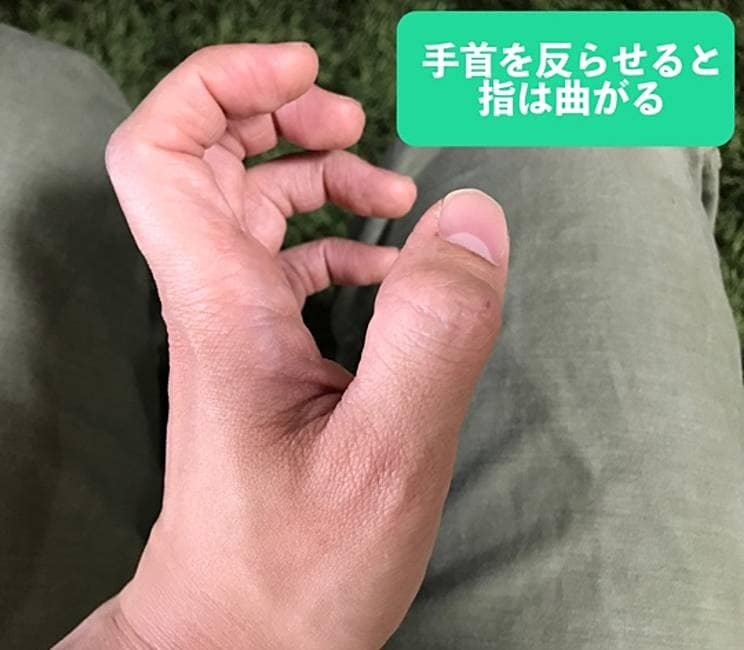
↑ The muscles that bend the fingers are taut, and the muscles that stretch the fingers are loose.
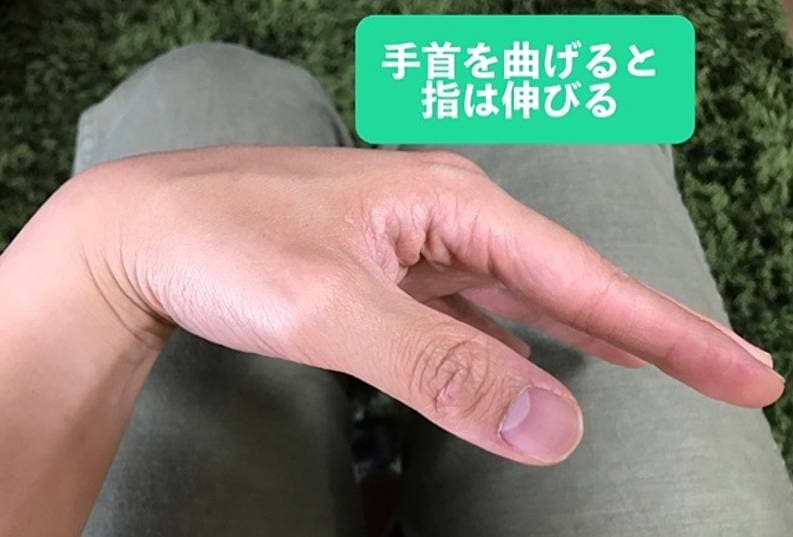
↑ The muscles that bend the fingers loosen, and the muscles that stretch the fingers become taut.
This is called the tenodysis action, and it occurs when the muscles that bend the fingers are pulled by bending the hands.
In this way, the length of the muscle changes depending on the angle of the wrist, and the condition of the fingertips changes.
As you can see by actually moving it, if you hold your hand with your wrist bent, you will feel that the back of your hand is stretched.
In the palm flexion position (bending the wrist toward the palm), the extensor digitorum muscle, which is responsible for extending the fingers, is pulled, making it difficult to bend the fingers.
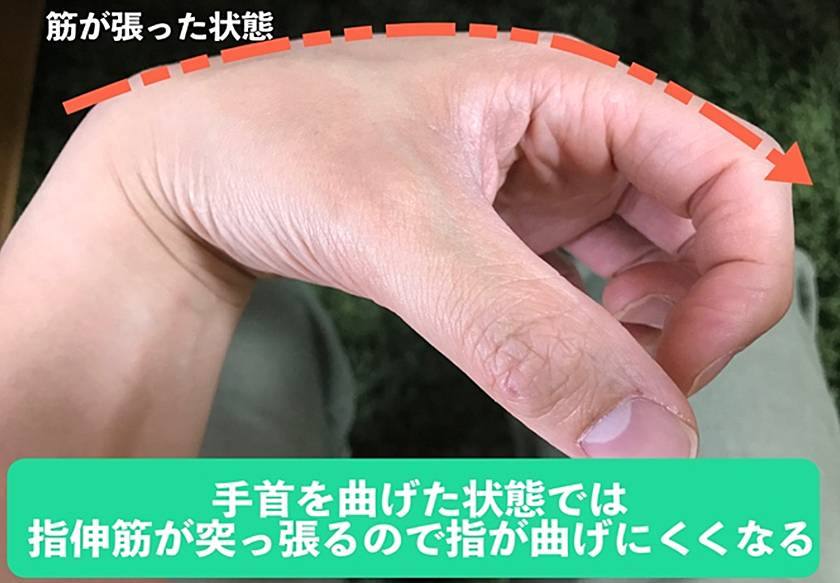
When you hold the guitar, your wrist is bent (the wrist is bent toward the palm), and the extensor digitorum muscles are stretched, making it difficult for your fingers to bend.
If you force yourself in this position, the extensor digitorum muscles will be stretched, which may cause pain and inflammation.
Therefore, it is relatively easy and effortless to press the strings by extending your fingers instead of bending them.
Furthermore, the muscles used to hold down the F chord are not the extrinsic muscles (the muscles that extend from the arms to the palm), but the worm-like muscles that are the internal muscles (the muscles that are connected to the palm).
The function of this worm-like muscle is to bend the finger from the base and keep the fingertip itself in a stretched state.
In medical jargon, MP joint flexion and IP joint extension occur.
Please look at the image and imagine it!
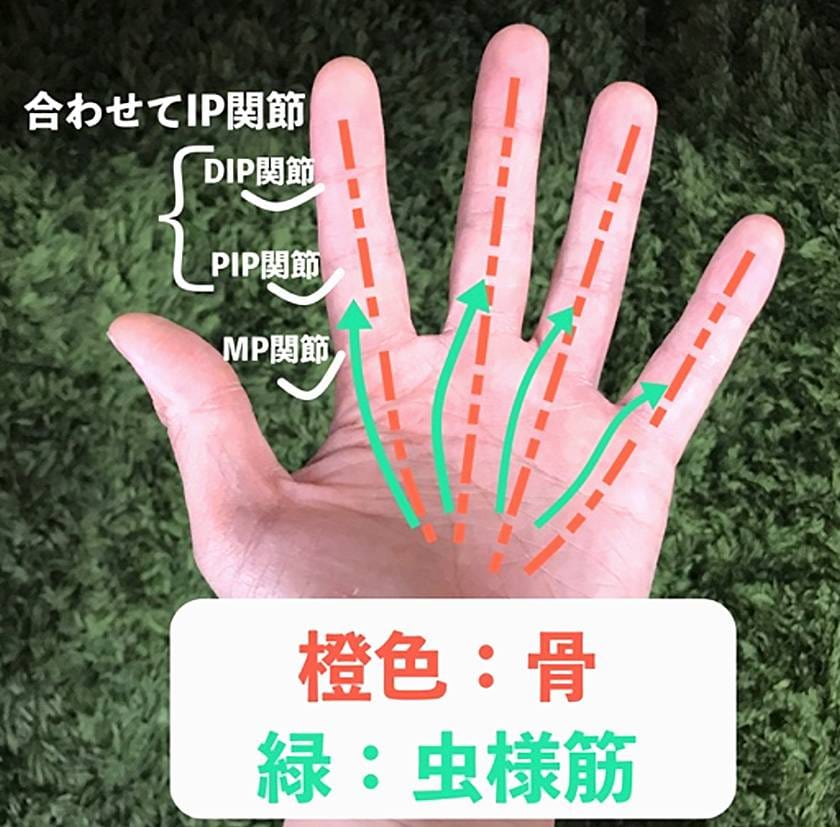
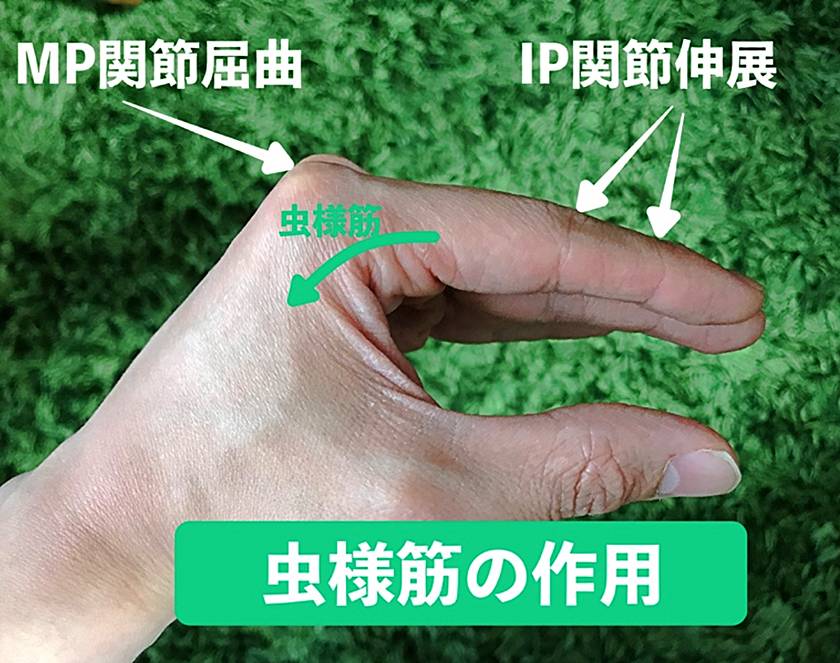
By using this internal muscles, you can control the force more delicately without burdening other muscles.
(It is said that the lumbrical muscle has many times as many sensory organs as other muscles, and fine control is possible.)
Since the muscles in the hand are very small, it is difficult to focus on them, but if you move using only large muscles (external muscles of the hand) like those attached to the forearm, it is easy to get tired and it may become like playing forced. I think it is worthwhile to know the function of the internal muscles.
Let's go to the next step!
4. Hold the strings imagining you’re pushing up the other fingers lightly.
If you can make a barre chord, the goal is just around the corner! Let's relax once, remember the form confirmed in 1, and hold down the F chord.
The three fingers other than the index finger are pressed in the same way, using the action of the worm-like muscles to press the strings lightly.
Be aware that if you press with too much force in this way, the strings will actually lift (like choking) and the pitch may shift. It's just an image, so the actual force you put in is kept to a minimum.
If you think “I have to press the strings with your fingertips more!”, you will be too conscious of this, and may be forced to bend your fingers, so be careful. If you can press the strings, there is no problem, so don't concern yourself too much about it.
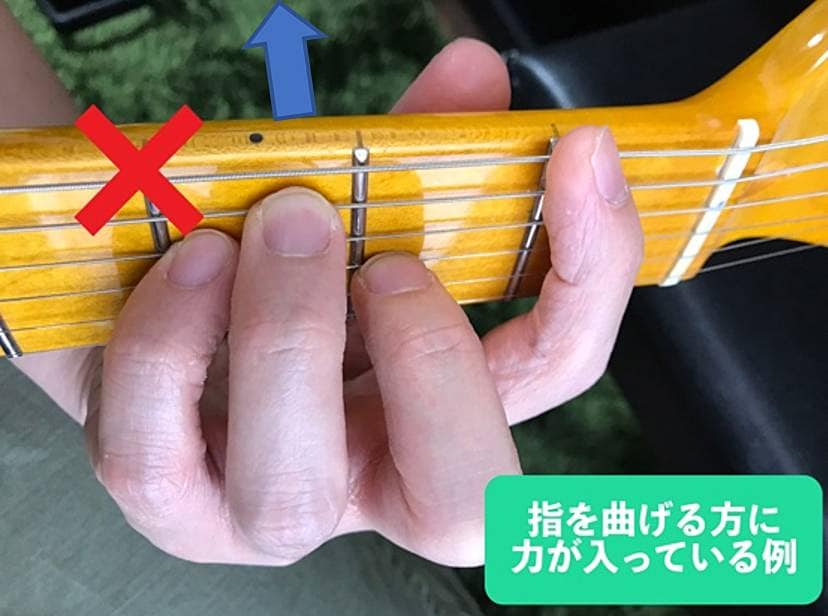
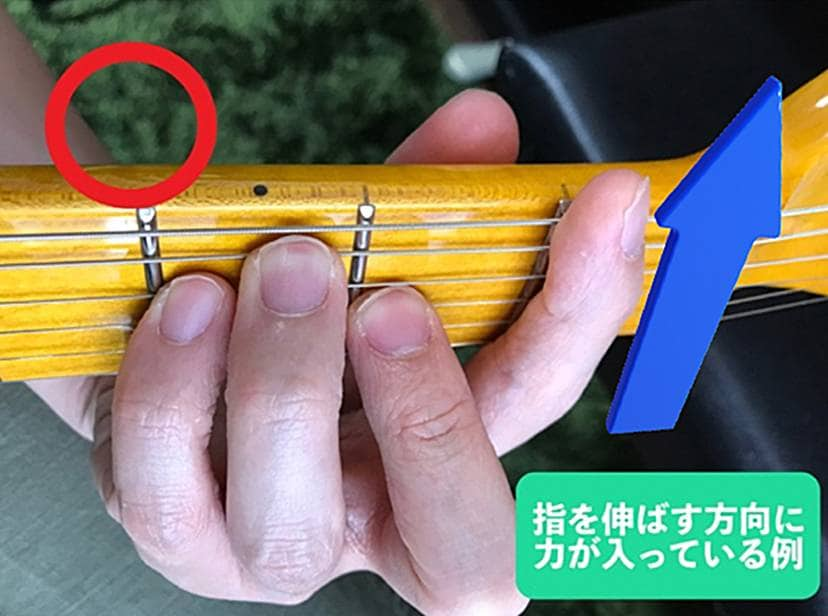
This is another angle.
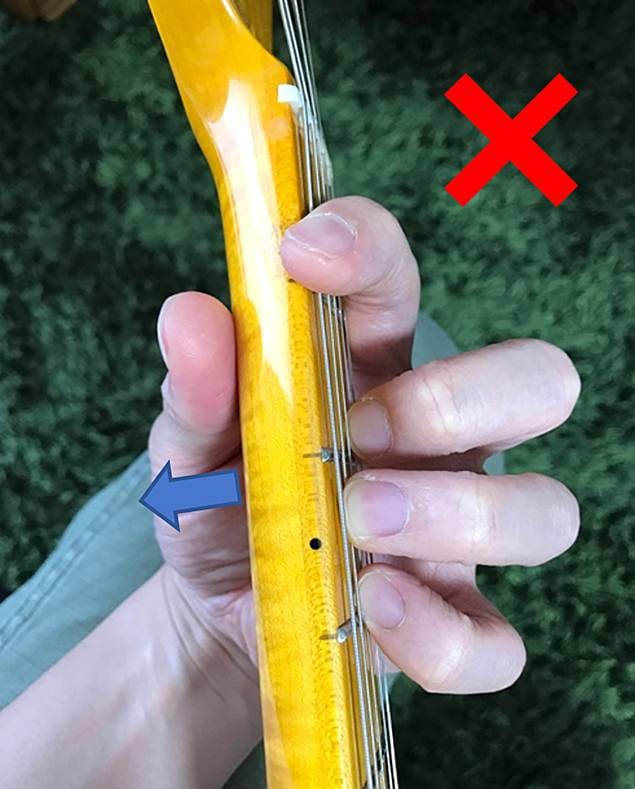
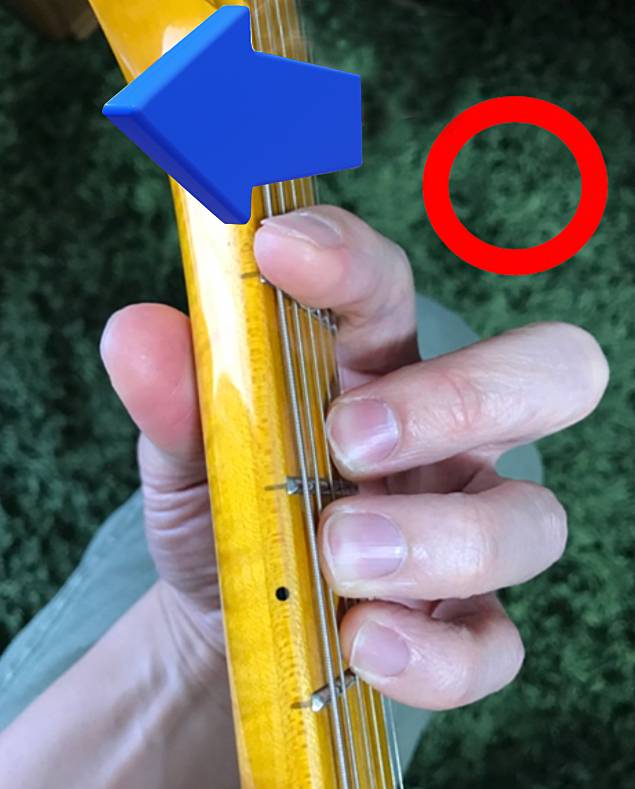
What do you think!
I think the most difficult thing is to adjust your strength.
If the chord does not sound well, it is possible that the force being applied is more than necessary or the direction of the force may be wrong. I hope that you will get the knack of holding the strings down easily with this method.
(Of course, it's not a mistake if you press the strings in some other way.)
If you are concerned about the F chord even a little, please try this once!
See you next time!


























